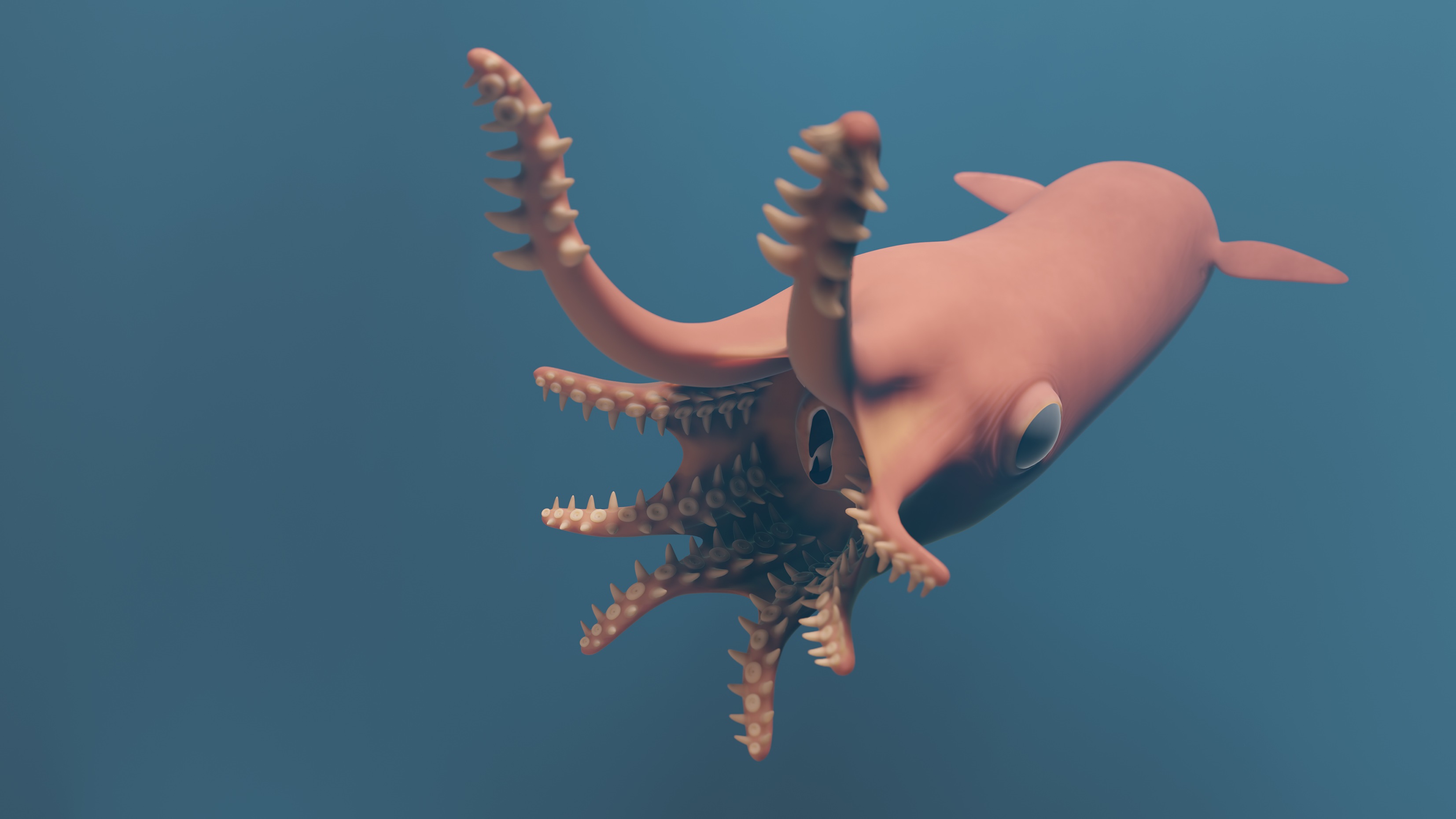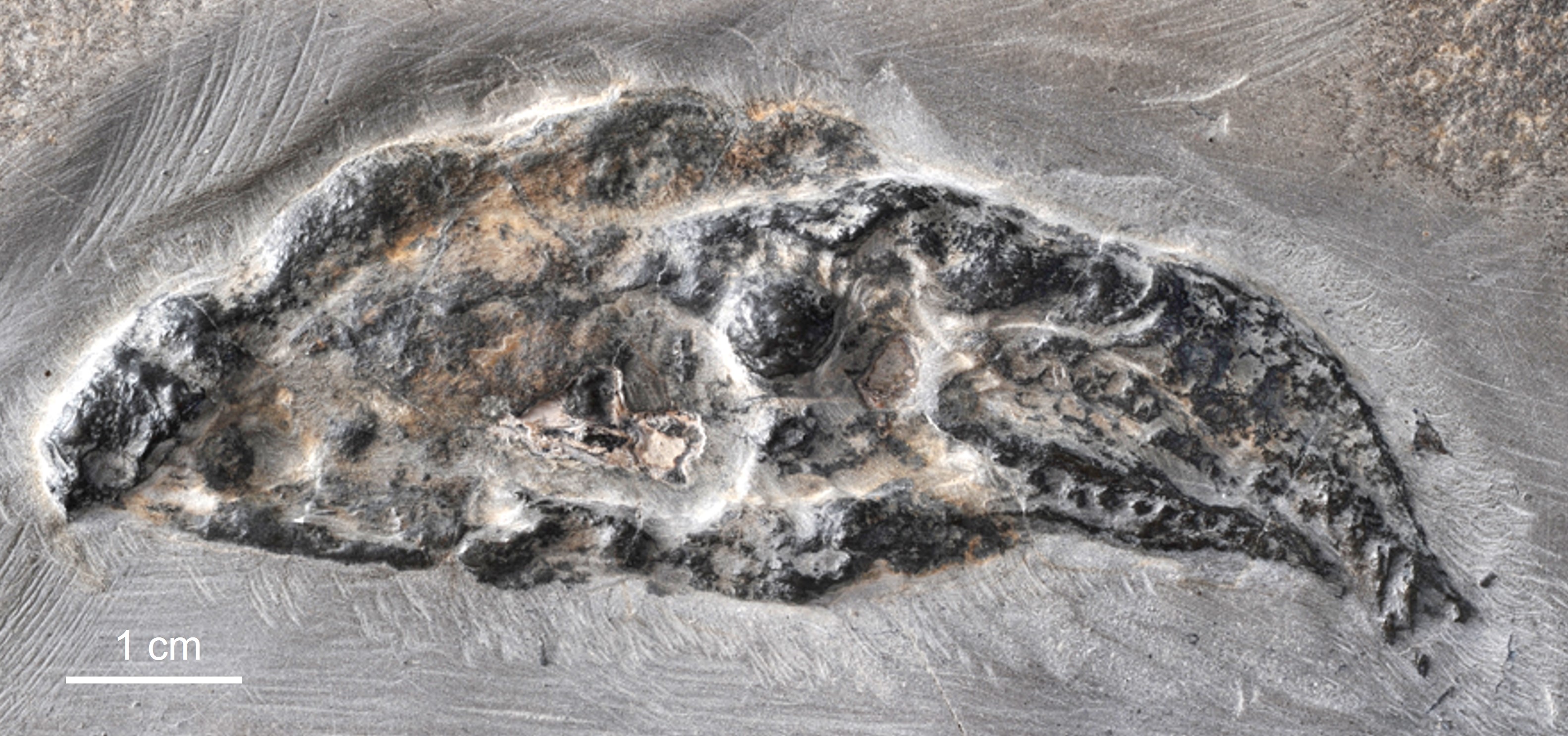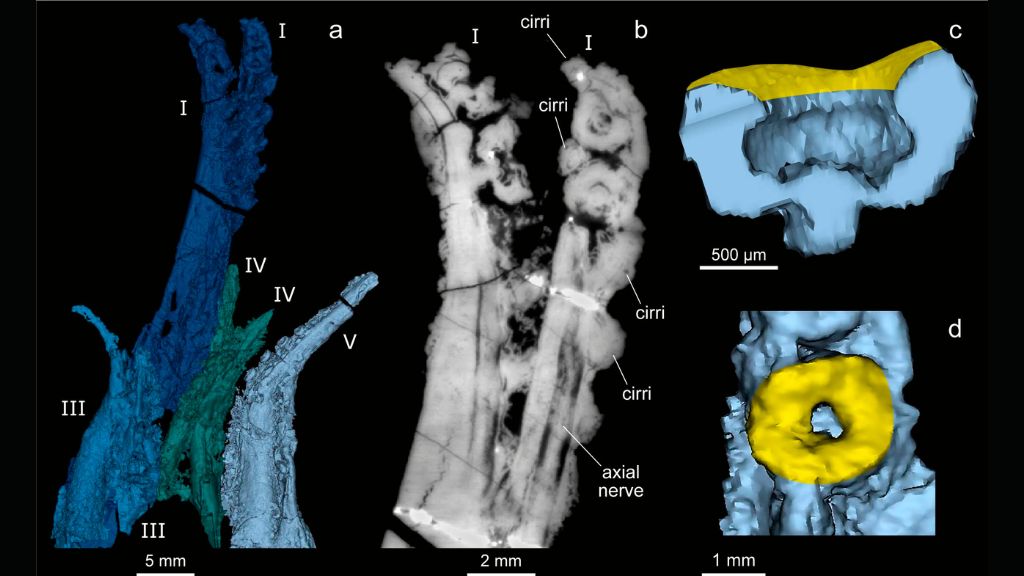8-armed Jurassic 'vampire' used supersuckers to trap prey, amazing 3D images reveal
The cephalopod likely hunted in the open ocean.

A Jurassic vampire squid-like creature used supersuckers to snatch prey out of the water column and lock it in place with a watertight seal, 3D imaging of several fossils reveals.
For the first time, scientists used advanced 3D imaging techniques to examine in great detail the prey-snatching suckers of Vampyronassa rhodanica, an extinct relative of the modern vampire squid (Vampyroteuthis infernalis). The analysis revealed never-before-seen features of the animal's internal anatomy, scientists reported Thursday (June 23) in the journal Scientific Reports.
"For the first time, we can show that there was a combination of anatomical characters in V. rhodanica not seen today," first author Alison Rowe, a doctoral student at the Palaeontology Research Center in Paris (CR2P), a lab backed by Sorbonne University, the French National Centre for Scientific Research and the National Museum of Natural History in Paris, told Live Science in an email.
The three fossils featured in the study were originally excavated from La Voulte-sur-Rhône Lagerstätte, an exceptional fossil site located in the Ardèche region of southeastern France. The site is about 164 million years old, meaning it dates to the middle of the Jurassic period (201.3 million to 145.5 million years ago), and it contains a trove of different fossilized marine organisms.
Related: 500 million-year-old fossil is the granddaddy of all cephalopods
"The La Voulte-sur-Rhône Lagerstätte in France is really special, as it preserves specimens in 3D," Rowe said. That's because, rather than rotting away, the flesh was replaced with iron-rich minerals over time. It's unusual to find fossilized cephalopods with any remnants of soft tissue, and when you do, they tend to be squashed flat, Rowe said. In this way, the 3D V. rhodanica fossils from La Voulte-sur-Rhône are a rare find.
Scientists first examined the fossils back in 2002, when they determined that the animals belonged to a previously unknown species, according to a report published in the journal Annales de Paléontologie. In that report, the researchers described a small, octopus-like creature with eight arms as well as suckers and spiky appendages called cirri. At that time, it was clear that each arm bore one row of suckers flanked by cirri on both sides. But the exact structure of these features was difficult to discern, and the internal anatomy of V. rhodanica remained mysterious.
Sign up for the Live Science daily newsletter now
Get the world’s most fascinating discoveries delivered straight to your inbox.

"I guess a crude comparison would be if you're used to looking at skeletons, and you suddenly have a mummy — it gives you a ton of extra detail, but looking at the surface of it isn't going to immediately tell you much about the internal anatomy," said Christopher Whalen, a National Science Foundation postdoctoral fellow of paleontology co-hosted at Yale University and the American Museum of Natural History, who was not involved in the study. In other words, the preserved soft tissues somewhat obscure the hard structures beneath.
By reexamining the fossils with powerful X-rays, the study authors provided "incredibly useful" insight into the animals' innards, Whalen told Live Science.
Related: Ancient 10-armed vampire squid relative named for Joe Biden
In particular, the X-ray analyses allowed the team to reconstruct the cephalopods' suckers in high resolution, such that they could "virtually dissect" the suckers on-screen, Whalen noted. These suckers are similar in shape to those of vampire squid, although they differ in that they're larger, more numerous and spaced closer together. V. rhodanica also carries a slightly different configuration of suckers and cirri on two of its arms, which measure slightly longer than its other six arms.

Based on this combination of features, and V. rhodanica's narrow, muscular body, the study authors theorized that the animal likely hunted prey in the open ocean and used its large suckers and specialized arms to capture and manipulate its victims.
"It seems reasonable to me to say that this animal was predatory," Whalen said. This sets the Jurassic cephalopod apart from vampire squid, since the modern animals don't hunt and instead feed on tiny organisms and bits of organic material that drift down to the deep sea from shallower layers of the ocean.
Vampire squid use long, sticky structures called filaments to pluck their food from the water column, but the authors didn't find evidence of these filaments in V. rhodanica. It may be that the Jurassic animals truly lacked these structures, or it could be that they're just missing from the specimens examined, Whalen said. A true lack of filaments could hint that V. rhodanica is actually more closely related to modern octopuses than to vampire squids, since octopuses also lack filaments — but for now, this is an open question, he said.
Originally published on Live Science.

Nicoletta Lanese is the health channel editor at Live Science and was previously a news editor and staff writer at the site. She holds a graduate certificate in science communication from UC Santa Cruz and degrees in neuroscience and dance from the University of Florida. Her work has appeared in The Scientist, Science News, the Mercury News, Mongabay and Stanford Medicine Magazine, among other outlets. Based in NYC, she also remains heavily involved in dance and performs in local choreographers' work.










